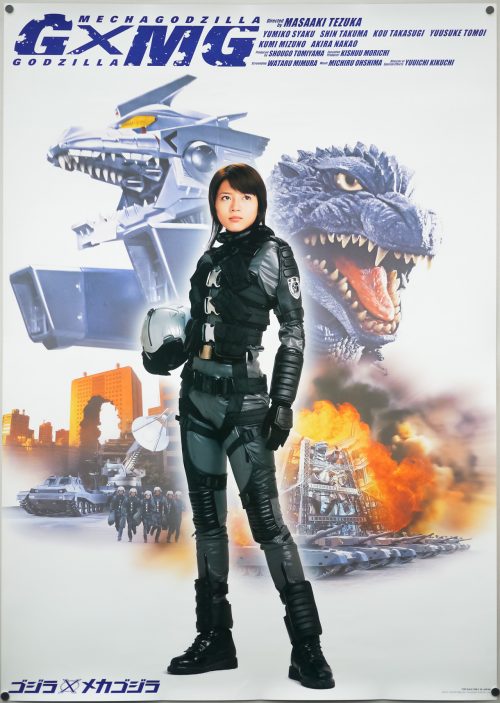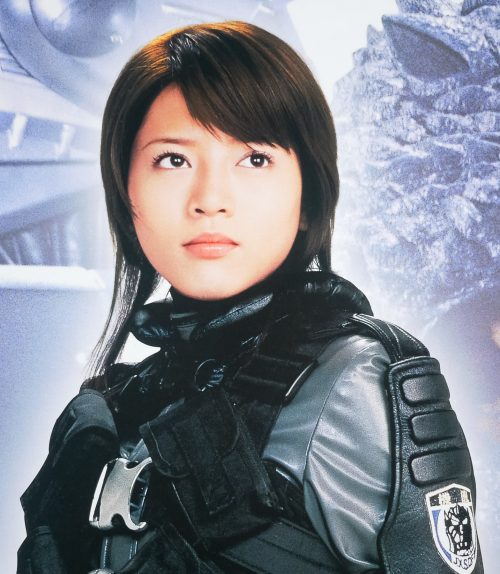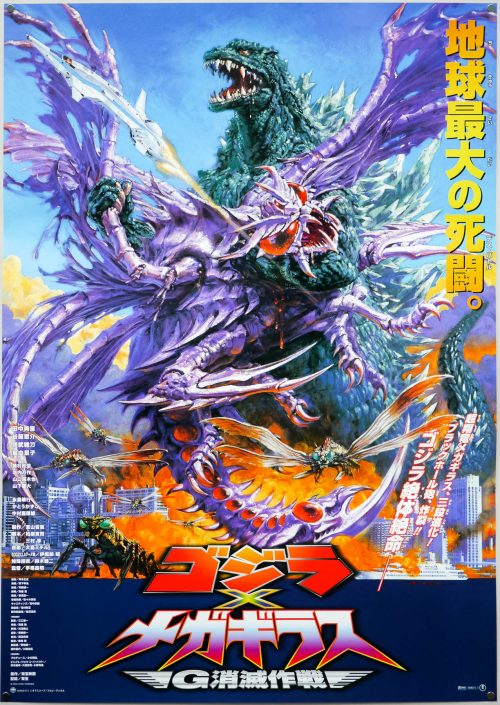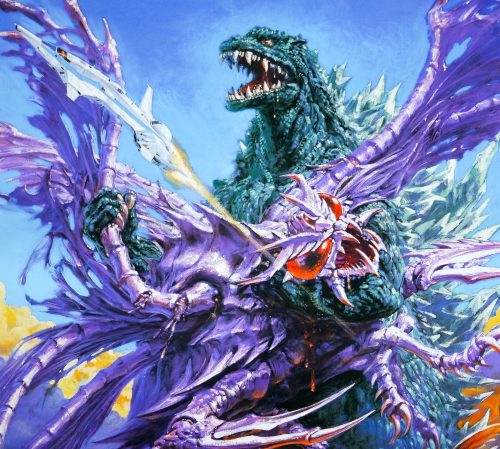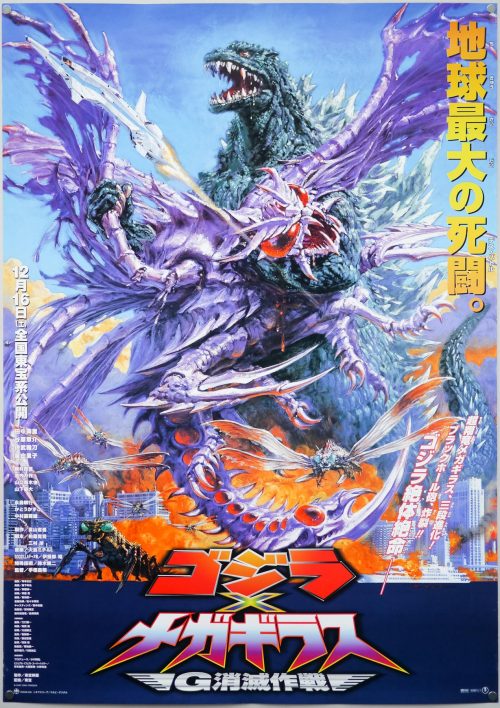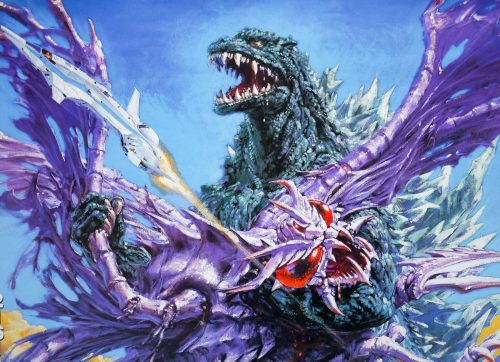- AKA
- Gojira tai Mekagojira (Japan - original title)
- Year of Film
- 2002
- Director
- Masaaki Tezuka
- Starring
- Yumiko Shaku, Shin Takuma, Kana Onodera, Kô Takasugi, Yûsuke Tomoi, Jun'ichi Mizuno, Akira Nakao, Kumi Mizuno, Takeo Nakahara, Yoshikazu Kanou, Kôichi Ueda
- Origin of Film
- Japan
- Genre(s) of Film
- Yumiko Shaku, Shin Takuma, Kana Onodera, Kô Takasugi, Yûsuke Tomoi, Jun'ichi Mizuno, Akira Nakao, Kumi Mizuno, Takeo Nakahara, Yoshikazu Kanou, Kôichi Ueda,
- Type of Poster
- B1
- Style of Poster
- Photo
- Origin of Poster
- Japan
- Year of Poster
- 2002
- Designer
- Unknown
- Artist
- --
- Size (inches)
- 28 12/16" x 40.5"
- SS or DS
- SS
- Tagline
- --
This is the photo style B1 poster for the release of Godzilla Against Mechagodzilla, which was the 26th film in the series featuring the King of the Kaiju (giant monsters). The film was also the fourth release in the third generation of Godzilla films, which is known as the Millenium Series, and it marked his fourth showdown with Mechagodzilla. Unlike the rest of the Millennium series, this film shares continuity with the earlier Toho productions, including the original Godzilla (1954).
This poster features the Japanese Actress Yumiko Shaku who stars as Japanese Defence Force Lieutenant Akane Yashiro, a Maser Cannon operator who is made a scapegoat after her actions fail to stop a rampaging member of Godzilla’s species. During the same battle, scientists realise that Godzilla is now immune to Maser fire and, after the skirmish is over, they begin work on a new weapon to stop him in the future. Using the skeleton of the original Godzilla that was defeated back in 1954, scientists create a new cyborg Mechagodzilla that is inducted into the Defense Force and given human controllers as part of the new Kiryu squadron.
Akane is given a role as a pilot despite suspicion from some of her squad mates. The pilots are located in a giant VTOL plane that hovers above Mechagodzilla, relaying instructions to it. During the reveal of the new machine to the public, Godzilla appears and as the two start to battle, Godzillas roar apparently awakens something within the original skeleton of Mechagodzilla and the machine goes on a rampage, destroying much of the city around it, once Godzilla has retreated. After bringing the machine under control the Kiryu squadron continue to work on Mechagodzilla in preparation for the next monster attack. When Godzilla appears once more, another battle commences which sees the remote control technology damaged. Akane decides to risk a descent to earth, where she enters Mechagodzilla and pilots the machine from within.
The film was well received by Japanese audiences and, as can be seen from the description above, was clearly one of the films that had an influence on director Guillermo Del Toro’s recent monsters versus machines film Pacific Rim.
The original trailer can be watched on YouTube.
